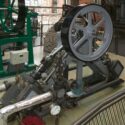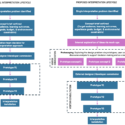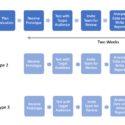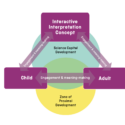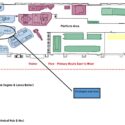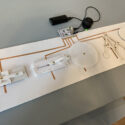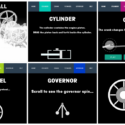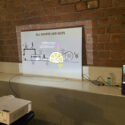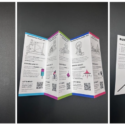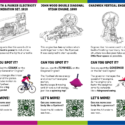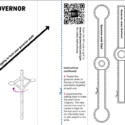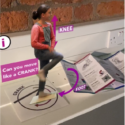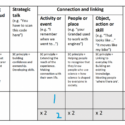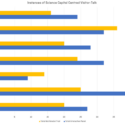Prototyping the Power Hall: a decision-making process
Article DOI: https://dx.doi.org/10.15180/252302
Abstract
Interactive gallery interpretation is seen as a valuable tool for engaging families with the subject of science and engineering. It can offer many opportunities for creating active learning experiences and can help stimulate visitor interest and motivation (Falk et al, 2004). However, with such an abundance of technologies and techniques to choose from, it can be challenging for exhibition teams to decipher which interactive interpretation approach will deliver the most impactful results for their future visitors. The practice research outlined in this study identified that there was currently no defined method to compare the success of one proposed interactive interpretation approach to another from the perspective of both family and science engagement, despite these two elements being essential components in the design thinking process.
This paper presents an innovative approach to interactive interpretation decision-making at the discovery stage of exhibition planning. It trials a process of evaluating and comparing multiple high-fidelity prototypes developed to answer the same interpretation problem through family discourse and a science capital-informed coding method. Science capital is a concept that describes a person’s science-related knowledge, attitudes, contacts and experiences, which can be accumulated over time (Archer et al, 2015). The author labels the investigated evaluation phase as ‘proto-scoping’ and explores its potential to guide the direction of audience-driven, interactive interpretation design before formal design briefs have been written, developers commissioned, and the more common, iterative prototyping begins.
Keywords
discourse analysis, evaluation, informal learning, interactive interpretation, Interpretation, prototyping, science capital, visitor engagement
Introduction
https://dx.doi.org/10.15180/This article draws from a University of Salford collaborative doctoral award undertaken by the author and directed by the Science and Industry Museum, Manchester in 2019–2024. It centres on the iconic Power Hall, housing one of Europe’s largest permanent collections of nineteenth and early twentieth-century working steam engines (Science Museum Group, 2024). The space is renowned for its impressive collection and evocative atmosphere, but many of the engineering concepts at the heart of steam engine science could be considered difficult for young museum visitors to relate to or engage with. The Power Hall content team invited the author to focus exclusively on exploring playful interpretation solutions for a compound of five small steam engines (we referred to this as the ‘All Shapes and Sizes’ compound). These engines all have five parts in common that are central to the workings of a steam engine. As such, these elements provided the foundation for the key interpretation challenge of supporting family audiences to experience the five fundamental principles of engine science.
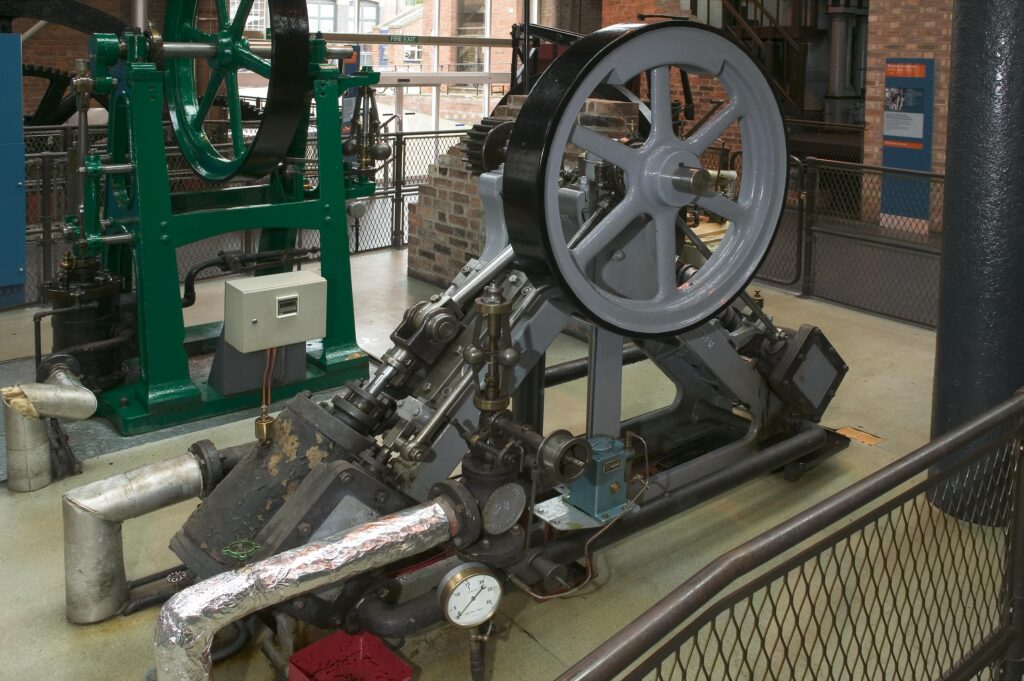
The author designed and developed a collection of interactive interpretation prototypes using differing approaches and technologies. Each prototype focused on playfully engaging children and families with the five engine parts and introducing basic steam engine science concepts.
In a museum and exhibition context, the term ‘engagement’ relates to an emotional or active interaction between the museum/gallery and the visitor (Wood and Wolf, 2008). It is an intrinsically motivated process which involves the visitor applying their attention to an experience triggering an emotional response, which in turn leads to a transformation. This might be a memory creation or a future behaviour change (Rodley, 2019). The aim of all interactive interpretation is to attempt to create the conditions where positive engagement happens and increases.
During the creation of the prototype concepts, the author applied the Science Museum Group’s construct of science capital[1] and everyday relevance.[2] However, through an action and reflection approach during the prototype development, the author identified the need for a standardised and efficient tool to compare the success of these prototypes, which could facilitate informed decision-making for the next stage of exhibition planning. Empirical research at the Science Museum Group (SMG) found that prototyping, beyond early mock-ups, more commonly takes place at a later stage in the exhibition design timeline after the exhibition team has decided on the interpretation technique, technology and approach. Prototyping at this later stage is usually an iterative process of fine-tuning, leading to a final design. If prototyping does occur at an early stage, this is usually done in a stand-alone exploratory format and evaluated using a bespoke case-by-case methodology, normally involving observation and surveys. These are time-intensive, qualitative methods that require detailed analysis and are not best suited for efficiently comparing two or more opposing concepts at the discovery phase.
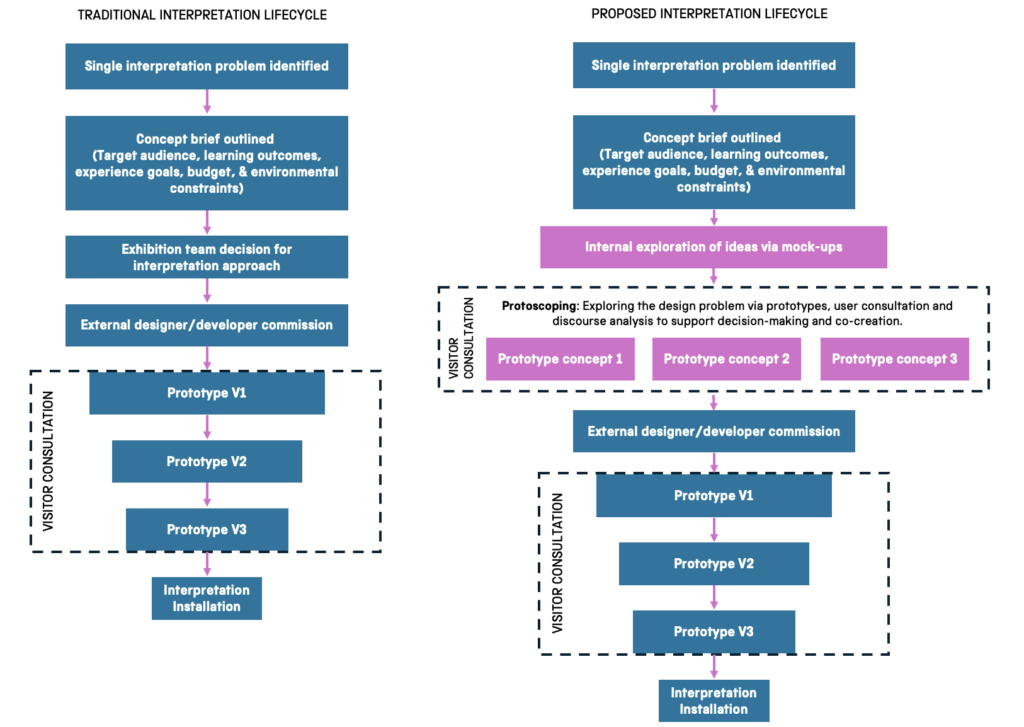
This paper presents a strategy to support user-driven interactive interpretation design and decision-making through proto–scoping. This is a comparative framework that involves evaluating two or more differing interactive science interpretation prototypes for the same design problem, using a coding method for science capital-themed verbalisations. Proto-scoping uses an ‘in-the-moment’ discourse evaluation system that efficiently highlights which of the interpretation approaches generates the most family engagement from the perspective of verbalisations categorised by science capital-related themes. In this process, the prototypes become objects of research, broadening the investigation field by testing various approaches to the same problem. Proto-scoping facilitates the delivery of a numerical score for each prototype, providing an easy way to compare the success of one interactive interpretation concept to another. Driven by audience participation and user testing, the proto-scoping approach has the potential to highlight more equitable and active learning experiences that foster personal connections with science content. This is opposed to early interpretation concept choices being motivated internally by budgets, aesthetics, technology or trends.
Literature and practice review
The Science and Industry Museum (SIM), like many science museum settings, aims to provide transformative and memorable educational experiences for its broad and diverse audience. They have a resounding philosophy of awakening curiosity through active participation and social interaction (Science Museum Group, 2022). The Power Hall content team was interested in using this collaborative research project as an opportunity to explore options for blended interactive interpretation concepts, which combined playful, digital and hands-on experiences to connect family audiences with steam engine science fundamentals. For the purpose of this specific article, the presented literature and practice review positions the study within the field of interactive interpretation design and prototyping. However, the practical design and development of the interpretation concepts involved a much deeper review of academic literature and can be viewed in the associated thesis.
Interactive exhibition interpretation design
Exhibition interpretation in the context of a museum or heritage setting serves to enrich audience experiences by communicating the wonder of their collections (McKew, 2022, p 3). It works to support meaning-making, provoke emotions and provide connections between visitors and their immediate environment (McKinty, 1999). It could also be described as a ‘revelation based upon information’ (Tilden, 1977, p 9), which seeks to empower visitors to form opinions, understand relationships/issues/concepts, and draw conclusions (McKinty, 1999). This study looked at interactive interpretation in particular, a term that encompasses the use of a variety of physical or digital methods to engage audiences with exhibition content. It puts emphasis on the role of the visitor in the process of meaning-making and can also be referred to as a ‘hands-on, minds-on’ approach, where exhibits or installations offer something to engage with physically as well as something to think about (Adams, 2002, p 2).
Reframing thinking about how visitors use different interactive mediums within a museum setting has the potential to create new interpretation and engagement routes in the form of blended learning opportunities (Donohue, 2017; Hawkey, 2006; Jewitt, 2012). Lee et al (2021) explain that in the broadest sense, blended learning in the field of museum interpretation involves the integration of two or more delivery mechanisms to improve learning performance and visitor engagement – this might be combining digital outputs with analogue or tactile mediums. They go on to suggest that a blended learning model can expand learning effects by combining a range of factors: goals, interaction methods, time, space, activities and media. Blended learning was suitable for investigation in this study because the Power Hall content team conveyed interest in digital delivery methods with a ‘light touch’, meaning that digital techniques would be integrated in a tactful and understated way that does not draw away from the exhibition or objects (Donohue, 2017). Researchers suggest that museums that make use of digital resources to supplement objects or exhibits using a more natural, lighter touch can encourage longer dwell times and provide a more social, engaging and personalised informal learning experience (Donohue, 2017; Hawkey, 2006; Jewitt, 2012).
For the purpose of this site-specific study, informal learning is defined as self-paced, free-choice learning that happens as a non-structured experience outside of the formal education environment. This may include social, interactive and multifaceted opportunities that engage diverse learners from a variety of different age groups (Falk et al, 2007; Gong, 2022; Koutsika, 2020). Yoon et al (2012, p 206) describe the nuances of informal learning within a museum environment to be fluid and sporadic, typified by learners quickly seeking out consumable content in bite-sized chunks. It is these characteristics that make designing informal learning experiences for museums both interesting and challenging.
Instead of concentrating on filling the gaps in a visitor’s science knowledge, SMG now considers that their museums should provide opportunities for visitors to connect with science and see where it has value in their lives, both now and in the future (Science Museum Group, 2020, p 15). They have a specific practical framework for interpretation design known as the ‘Audience Engagement Framework’. This document provides clear guidance about what makes a good science engagement experience (Science Museum Group, 2019) and is centred on five key ingredients:
- Hook – Capturing the visitors’ attention and introducing the content. This could be the way the interpretation looks or how it sparks initial curiosity.
- Inform – How information and content are shared with the audience and how it links to their existing knowledge.
- Enable – Allow the audience to get involved. This could be through hands-on activities or asking thought-provoking questions.
- Extend – Make the experience last longer and encourage visitors to explore further. This might be done through links and signposts, challenges to complete, or questions to think about.
- Reflect – Engagement reflection points should be put in place throughout the design and development of STEM activities and interpretation.
The framework is used across SMG for new exhibitions and gives project teams a focused way to think about audience engagement approaches. The author considered the Audience Engagement Framework to be a useful tool for idea generation at the start of a particular interpretation project but lacked the facility to move the decision-making forward in an audience-driven way once concept ideas had been generated. Nevertheless, it provided a valuable reference point for the practical design and development process for the prototypes featured in this project and, alongside a science capital-informed approach, feeds into the proto-scoping strategy used to grade the success of a given prototype.
Science capital
Both formal and informal educational settings are increasingly adopting a science capital-informed approach to help broader audiences engage with science. Science capital builds on the work of French sociologist Pierre Bourdieu (1990). Bourdieu described the notion of cultural capital as the impact of social and cultural experiences on an individual’s ability to ‘get ahead’. Similarly, science capital is concerned with the science-related experiences, knowledge, relationships and attitudes that a person incrementally builds up throughout their life. Research suggests that the implication of high science capital levels brings skills, connections and awareness and, therefore, increases the currency of science capital in a society (Archer et al, 2015).
SIM strives to develop exhibition interpretation that encourages diverse groups of visitors to have a positive, accessible and connected experience with science during their visit (Science Museum Group, 2021a). Equity and social justice are integral to the concept of science capital, and it is through this inclusive approach that visitors can be empowered and supported to access the opportunities and wonders of STEM (Science Museum Group, 2021b, p 4).
The Science Museum Group (Science Museum Group, 2021b, p 14) believes that a science capital-informed approach to exhibition content and interpretation can be achieved by:
- Focusing on making visitors feel welcome and confident in museum spaces.
- Using language and communication so that all visitors can feel part of science.
- Considering how to connect and relate to audiences’ diverse interests, experiences and everyday lives.
- Valuing and building upon the existing STEM knowledge and experiences that the visitor brings with them.
- Making exhibits, communications, recruitment, programmes and marketing inclusive.
Alongside the Audience Engagement Framework, SMG’s construct of science capital was utilised throughout the development of the interactive interpretation prototypes.
Prototyping
Prototyping is one of the most critical activities in the development of new products, artefacts, interfaces and more, but the term can mean different things to different industries and applications (Wall et al, 1992). Lauff et al (2018, p 10) define a prototype as ‘a physical or digital embodiment of critical elements of the intended design, and an iterative tool to enhance communication, enable learning, and inform decision-making at any point in the design process’. They go on to define prototyping as the means through which designers and developers discover, generate, test and refine user experiences. Beaudouin-Lafon and Mackay (2007, p 52) define a prototype as ‘a concrete representation of part or all of an interactive system. A prototype is a tangible artefact, not an abstract description that requires interpretation.’
Beaudouin-Lafon and Mackay (2007) claim prototyping has three particular characteristics, each of which connect especially well with this study:
- Prototypes support creativity, helping the designer or developer to generate ideas, explore the design space, and uncover relevant information about users.
- Prototypes encourage communication, helping the developer, stakeholders, customers and users to discuss options and interact with each other.
- Prototypes permit early evaluation because they can be tested in a variety of ways, including traditional usability studies and informal user feedback, throughout the design process.
During the Power Hall project, informal discussions were held with members of the Audience Research Team at SIM and the wider SMG with regard to current practices in interactive interpretation prototyping. This was an important step for not only gathering information about existing strategies and identifying opportunities for investigation but also ensuring the validity and rigour of the developing approach of this study.
Audience researchers expressed that, rather than a standardised procedure for evaluating prototypes, tailored solutions were generally created according to the demands, requirements and learning outcomes of the project. Methods of prototype evaluation and data collection currently consist of observations and semi-structured interviews. These are undertaken in small numbers and in-depth, until trends are seen and discoveries are made about why they are happening. The SIM and SMG audience researchers reported prototype evaluation as essential but time-intensive and that the analysis of detailed qualitative data, whilst informative, can be challenging to decipher.
Presently, within SMG, prototyping and target audience consultation most commonly takes place after a period of input and influence from SMG review groups, exhibition steering groups, exhibition content teams and interpretation advisory panels. A design brief is then defined, and the exhibit design team is commissioned. Usually, this is followed by the production of three iterative prototypes, each produced two weeks apart by the commissioned exhibit design team. These are then tested with the target audience at the museum site by the audience research team. Feedback is provided to the exhibit design team, ready for the next iterative phase of user testing. This can be seen visualised in the presentation slide screenshot below (Figure 3), which the audience research team shared to demonstrate the usual proceedings.
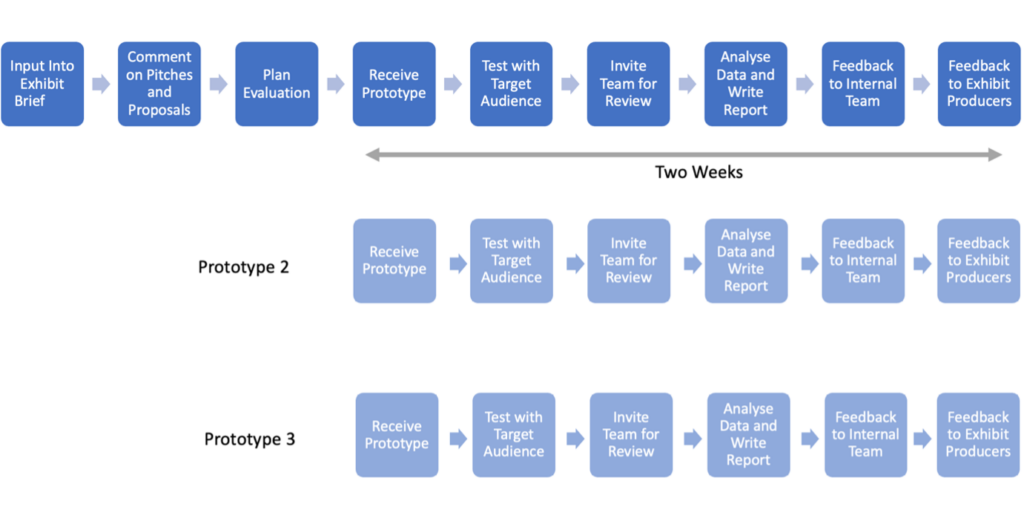
The author observed that in this system, many early decisions about interpretation approaches are made before testing ideas with users. This leaves an opportunity for more research into comparative prototyping in the early phase of exhibition interpretation design to promote a more collaborative, visitor-centred process.
Interestingly, Haywood et al (2023) demonstrated the use of a more exploratory method for prototyping during their investigation into young children’s learning at the Science Museum in London. Their work prototyped two interpretation approaches to evaluate how families learn from unfamiliar objects within an existing exhibition. One prototype featured a small toy collection, including a replica of a large gas light object on display. The other prototype was an arrangement of familiar objects with conversation prompts positioned next to hard-to-recognise gallery objects. The study involved observing families interacting with the prototypes and was followed by semi-structured interviews. The results revealed this form of guided play prompted families to utilise their existing understanding and interests in order to learn from objects. Despite Haywood et al’s prototypes being low-fidelity and non-digital, their work had numerous similarities with the proto-scoping approach trialled in this Power Hall study, mainly as an example of discovery phase prototyping with families. However, there are a number of key differences and opportunities for research. Firstly, Haywood et al’s evaluation focused on science objects rather than science principles; they were interested in the nature of the objects and providing visitors with ‘permission’ to play. Secondly, the verbal responses from families were recorded in note form rather than codification, leading to a more labour-intensive evaluation. Finally, their evaluation was not used to compare solutions for the same interpretation problem; it looked at the broader view of family engagement within a whole exhibition involving different objects and points of interest.
The mixture of views surrounding prototyping lifecycles and frameworks is of even greater significance to this study. One valuable and influential example is the work of De la Rosa (2017). Put simply, their study looked at how a framework for prototyping does not necessarily need to take a simple funnelling approach but instead can act as an exploratory probe that supports deviations and new knowledge. Their framework for prototyping avoids the common concept of iterations aiming for the ideal solution and instead looks toward the periphery of a design problem in an attempt to draw out a new understanding of the challenge itself. De la Rosa’s approach demonstrated how prototypes can be used as a negotiation tool between stakeholders within a project lifecycle. This alternative perspective is particularly relevant because it demonstrates how prototypes can be used to widen the field of investigation rather than narrow it down too early.
Due to the practice-based nature of prototyping and interactive interpretation design, much of the work taking place in the field is almost certainly going undocumented in the academic domain. The area lacks evidence of formal procedures and methodologies that offer a rigorous guide for supporting socially engaging, visitor-driven interactive science interpretation development. This lack, however, highlights the need for formalised research in the specific field and the requirement to share experiences and tools more widely.
Conceptual framework
The underpinning theories, which provide a foundational basis for this study, focus on social constructivism and the Zone of Proximal Development. These elements are drawn together to inform the proto-scoping strategy for interactive interpretation prototyping and development.
It was recognised that social constructivism has many parallels with the SMG construct of science capital, particularly the key notions of active social participation and the influence of prior knowledge and cultural experiences. A principal idea of social constructivism is that new learning is built upon a foundation of previous knowledge; it is focused on learners and active participation (Hausfather, 1996).
Furthermore, according to the social constructivist ideology, knowledge results from social engagement and language use; it puts emphasis on the process of learning in social settings rather than the passive transmission of information (Wertsch, 1985). In Vygotsky’s social constructivist theory of learning and development, the Zone of Proximal Development (ZPD) focuses on collaboration and relationships in the learning process. Vygotsky identified that we learn through dialogic interaction with others and that the level of potential development and learning increases through the process of collaborative communication, particularly with more capable peers or adults. His research around ZPD highlights utterance-to-utterance relationships and interaction as the cornerstone of informal learning (Billings and Walqui, 2017). The author made connections between the ZPD, SMG’s science capital approach, and family engagement. Connections between these theories and constructs led to the discourse analysis method being used as a way of measuring prototype success.
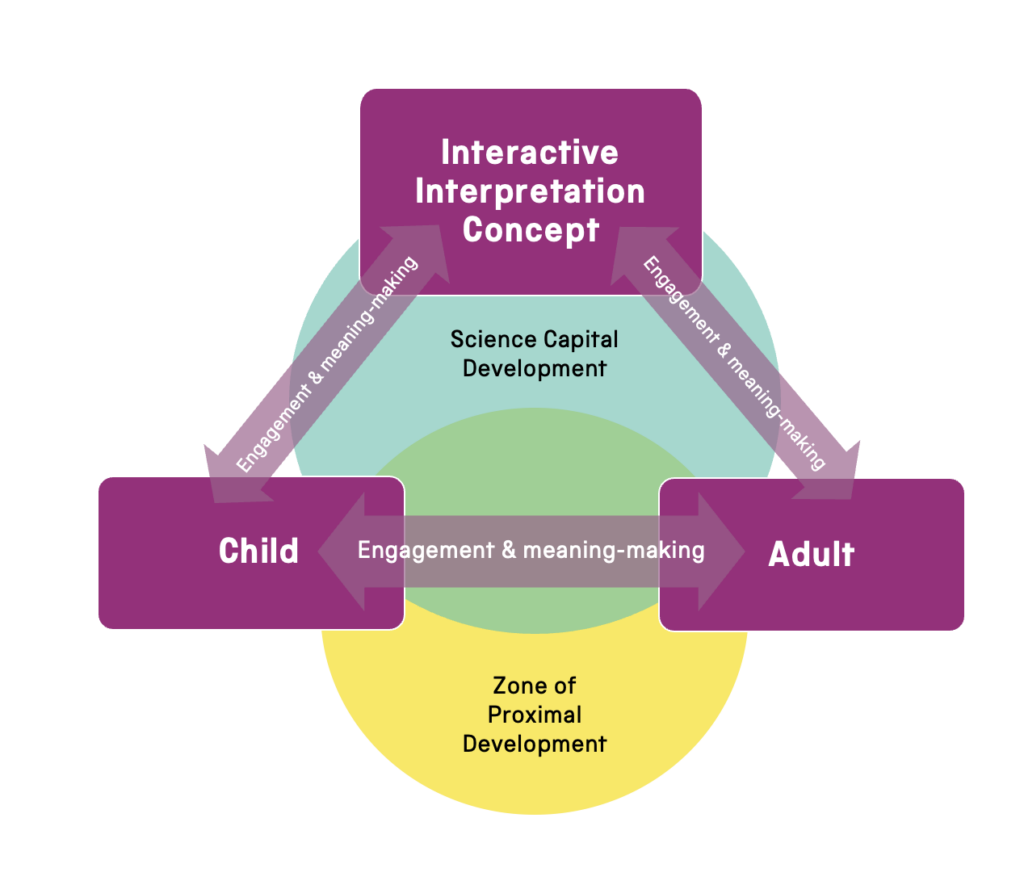
The essence of ZPD is echoed in much of the existing museum and learning research related to family engagement. Humans make sense of the world through social scenarios with others in a process of ‘distributed meaning-making’, and understanding can be achieved by gathering information from multiple sources rather than just from one place or person (Falk et al, 2012). With a social lens, it is through discourse that an individual comes to identify themselves as being part of a community or group, often sharing vocabulary, experiences, values and beliefs (Ellenbogen, 2004); these qualities also have clear associations with science capital concepts. For instance, Archer et al (2016, p 3) outline that one of the key dimensions of science capital is:
…talking about science in everyday life: how often a young person talks about science out of school with key people in their lives (e.g. friends, siblings, parents, neighbours, community members).
In relation to informal learning, the mutual exchange between two or more individuals from different generations provides a natural catalyst for building knowledge and skills as well as the ability to remember, recall and apply thinking (Boger and Mercer, 2017; Haden, 2010). In recent years, researchers have outlined the conditions under which attending experiences together has consequences for human memory, motivation, judgment, emotion and behaviour (Shteynberg, 2015). Povis (2016) suggests that when two or more people concentrate on the same aspect of their shared environment, be that an object or topic, their joint attention has significant benefits in social learning situations and provides an opportunity to share real-life experiences from both sides of the conversation. Shteynberg (2015, p 4) explains that through vocalisation and shared attention between individuals, the allocation of their cognitive resources is increased, emotional intensity is amplified and, in turn, the experience or information is better remembered. From the standpoint of a museum environment, joint attention can increase dwell times, promote inquiry at exhibits and lead to increased learning talk and memory outcomes (Povis and Crowley, 2015).
These perspectives and theoretical concepts became the driving factors in designing steam engine science interactive interpretation prototypes and developing the proto-scoping and discourse analysis strategy. Importantly, the combination of these concepts was used as a tool to measure interactive interpretation prototype success.
Practice research
The author, with direction from the SIM Power Hall content team, developed four high-fidelity prototypes (described below) in response to the same interpretation problem: How might family audiences experience steam engine science fundamentals connected to a compound of small steam engines in the Power Hall? The position of the compound can be seen indicated in Figure 5, where it is labelled ‘All shapes and sizes’.
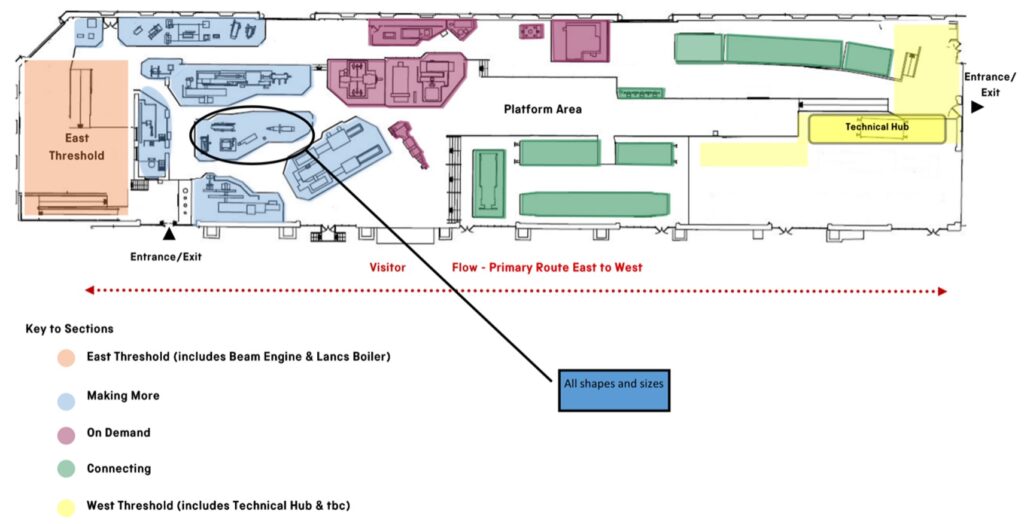
The five engine parts in focus were the cylinder, the crank, the flywheel, the governor and the belt connection.
Although the four prototypes were developed in response to the same design challenge, they took different approaches and used differing types of digital technology to support and enhance the interactive experience.
- A hands-on play panel
- An interactive web application (Power Hall online)
- An interactive engine projection
- A multimodal AR trail
Prototype 1: a hands-on play panel
This interactive interpretation concept was developed to encourage visitors to interact with a playable panel of moving parts in a tactile and visceral format. These interactions were proposed to trigger audio-visual content related to the five engine parts on a suspended digital display above the compound of engines. An overview of the play elements is given below.
- Sliding bar movable in a linear motion, representing the reciprocal movement of the piston inside the cylinder.
- Sliding crank linked to a cam, showing how the reciprocal motion converts to rotary motion.
- Free-spinning wheel, showing the concept of inertia related to the flywheel.
- Jointed governor, demonstrating how the rising of the governor’s arms controls the valve to reduce the flow of steam to the cylinder.
- Two wheels connected by a belt demonstrating the transfer of movement and energy from one place to another.
Figure 6 shows the prototype made from mountboard and split pins which were connected to a Bare Conductive Touch Board[3] via copper tape and a small speaker to represent the digital output. When the user touched the tactile play elements, sensors triggered an MP3 file explaining the functionality of the engine part. Further development was planned to enable these triggers to play animations via a visual display.
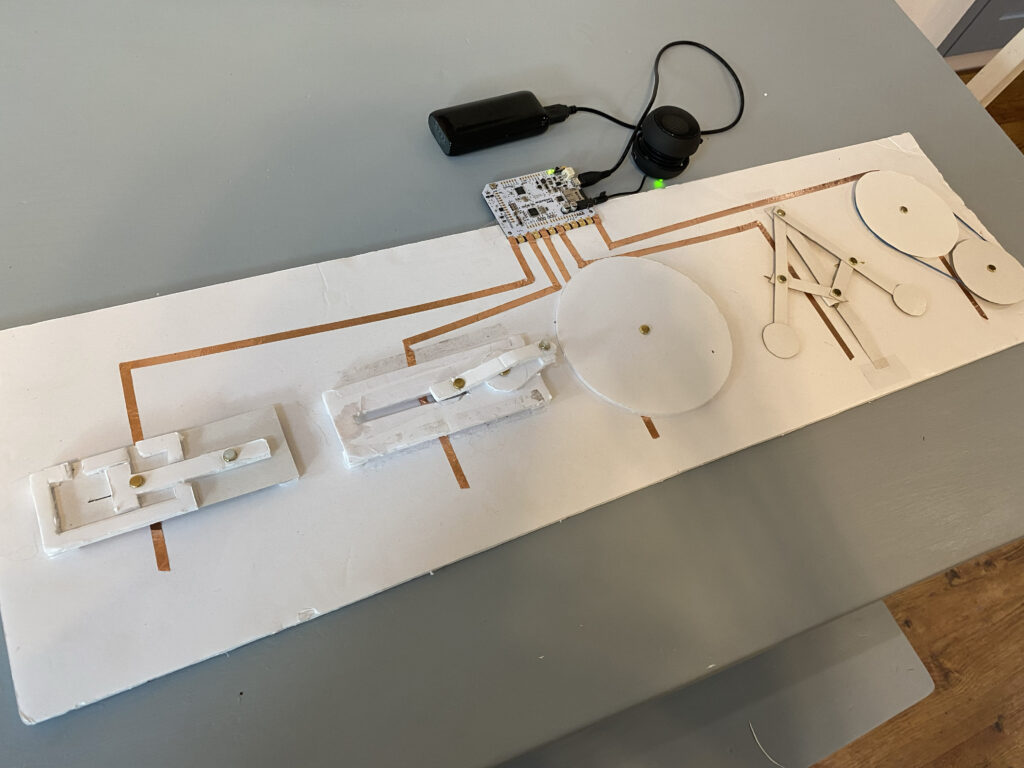
Prototype 2: an interactive web application (Power Hall online)
The second prototype took the form of an online interface developed using the GreenSock Animation Platform (GSAP)[4], which attempted to recreate the playful tangibility of the previously described hands-on play panel in a digital format. Although an entirely screen-based solution was not deemed ideal for family exhibition engagement by the author and Power Hall content team, we agreed that this approach should be explored to mitigate a pandemic situation where hygiene and remote access would need to be considered. The author explored how visitors could be provided with a sense of agency over the animations and content and create a whimsical experience which would bring movement and playfulness to the fore. This online interface can be seen at https://thepowerhall.com/GSAP and a collection of screenshots from Power Hall online digital interface can be seen in Figure 7. The experience was designed to be playful, modern and atmospheric but with the ambition to replicate some of the ambience of the Power Hall.
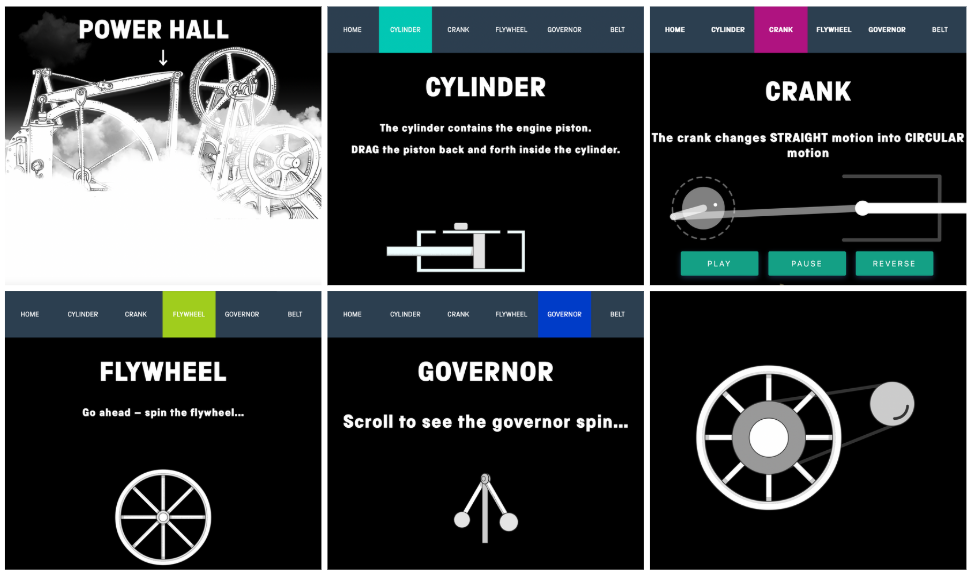
Prototype 3: interactive engine projection
The third interactive interpretation concept builds upon the thinking done for the first two concept ideas. However, the author was interested in creating an interpretative tool that would not only show how each key part moved individually but also how they work within the engine system as a whole. This prototype consisted of a graphical design of a simple engine upon which animations were projected, triggered by touchpoints using MadMapper and the Bare Conductive Touchboard. The prototype can be seen set up in Figure 8 and in action via this video (Christina Buckingham, 2022c). The engine animation was enriched with ‘everyday relevance’ information and visuals and fun and emotive sound effects. The functionality was designed to welcome social interaction and repetition.
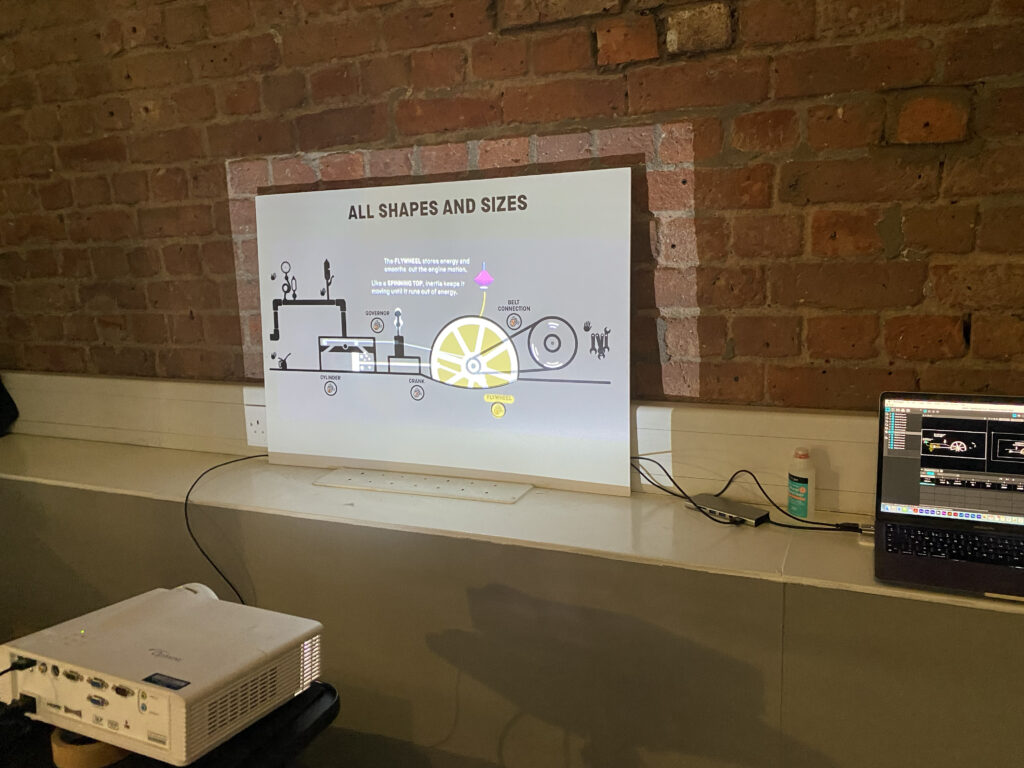
Prototype 4: multimodal AR trail
The final prototype was a multimodal, augmented reality-enhanced trail. The author was looking to create an approach to interpretation that visitors could pick up in the gallery, engage with, and take home to extend the learning experience. The prototype took the form of a folded, paper-based interpretation concept that provided digital enhancement and a craft activity. Visualisations of the trail leaflet can be seen in the images below.
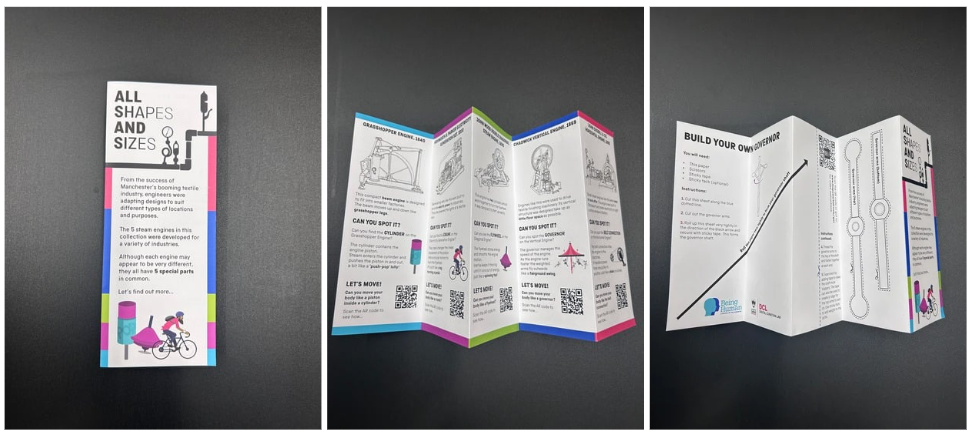

The author and the Power Hall content team wanted to investigate how interpretation could be used to get visitors to move their bodies like the parts of an engine. It was intended that by supporting learning and playing kinaesthetically in this embodied way, we could attempt to create a more joyful and memorable experience.
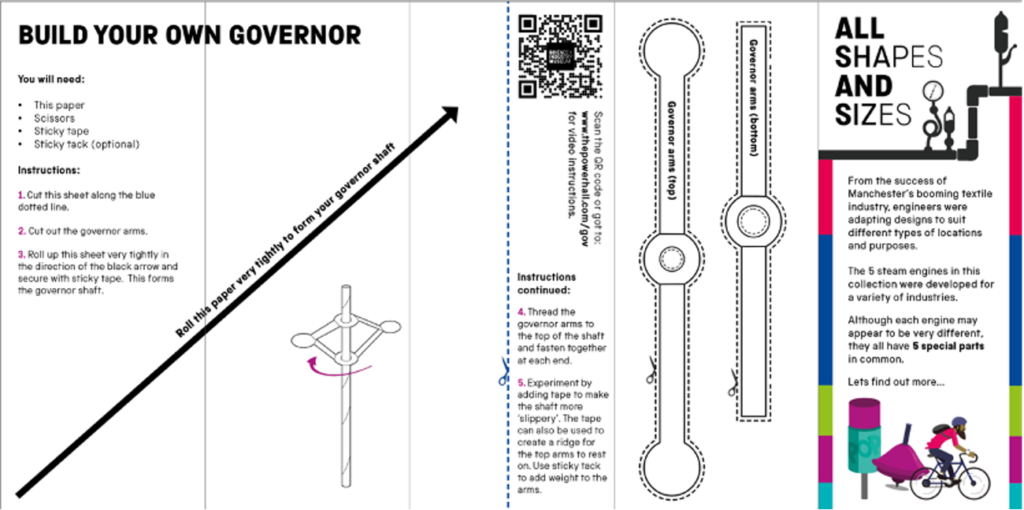
Visitors scan one of the five quick response (QR) codes from the leaflet with their mobile device, and the augmented reality (AR) interface instructs them to find a particular trigger image which would be located next to the relevant engine within the compound.

Each trigger opens a different AR element featuring a child (parental permission obtained) demonstrating a fun action to make, moving their body like the relevant engine mechanism. The prototype aimed to bring a human element into the experience in a light-hearted way, getting families moving and engaged. To see a video of the prototype in action, please follow this link (Christina Buckingham, 2022a).

With stakeholder consultation, the physical movements for each engine part were:
| Cylinder: | Standing on one spot, crouching down, then stretching tall. |
| Crank: | Standing on one leg, pedalling the other leg round and round. |
| Flywheel: | Spinning around on one foot. |
| Governor: | Turning quickly on one spot with arms relaxed at the side. |
| Belt Connection: | Two people holding hands to form a chain, passing kinetic energy from one to the other. |
The AR feature of this interpretation was used to create a social and dynamic engagement scenario. As a team, we were excited by the opportunities that AR could open for further development and felt positive about the ‘unexpected’ element of the interpretation. We began to think about ways to make this experience more diverse and inclusive in future iterations, using more human representation, different genders, ethnicities and physical abilities. This would give visitors a better chance of seeing and connecting with ‘someone like me’. The concept also showed that augmented reality has the capability of being prototyped in-house with minimal augmented reality development experience.
On the reverse side of the trail leaflet, the author designed a ‘Build your own governor’ paper craft activity, as seen in Figure 11 and constructed in Figure 14. A video of the paper governor in action can be seen via this link (Christina Buckingham, 2022b).

Like the AR exercise, this activity utilises embodied cognition theories and opens new avenues for communication and learning as a social and shared experience.
Prototype summary
The four prototypes described above were created over a period of 16 months. During this time much changed with the direction of the wider Power Hall interpretation project, and the Covid-19 pandemic had a significant impact on the decisions made. The practice research had to react responsively to the modifications and demands of the project. Prototype one was eventually put aside due to its unsuitability for use in a low-contact, hygiene-friendly format. Prototype two was developed in direct response to the pandemic but was eventually set aside because the Power Hall content team felt a fully digital interpretation solution was not in line with the exhibition ethos. Prototypes three and four were chosen to be carried forward to preliminary user testing and the formal proto-scoping phase, where they were evaluated in collaboration with museum visitors.
Method
Preliminary user testing
Three informal user testing sessions were conducted while the prototypes were in stages of completion, where 32 families participated in testing the concepts over three days at the museum. This method involved user observations (including field notes of key statements) followed by a short questionnaire to inform further adjustments to the design concepts.
During this testing period, it was noted that visitors were more likely to chat about the ‘everyday relevance’ examples than they were about engine science. We saw this as a positive result because participants were clearly making surprising connections to their own lives which could be built upon throughout the exhibition experience. It was also evident during these initial sessions just how interesting visitor dialogue and discourse could be to evaluation. Even though we were testing preliminary and fledgling prototypes, numerous moments of joy and surprise occurred. Some prominent statements gathered from field notes included:
- “Haha, I’ve got them all moving at once!” Nine-year-old playing with the iPad interface for prototype three (interactive engine projection).
- “We should have bought Grandma here; she loves things like this.” Eight-year-old playing with the digital interface for prototype three (interactive engine projection).
- “I want to take this into school to show my teacher.” Eight-year-old playing with paper governor for prototype four (multimodal AR trail).
- “Oh wow, that’s cool! How did that work?” Ten-year-old viewing AR trail for prototype four (multimodal AR trail).
- “Aaah, that’s too loud!” Five-year-old playing with the digital interface for prototype three (interactive engine projection).
Although this was an informal consultation exercise to facilitate a participatory design process, it was clear that statements like these were extremely valuable as a form of science capital-informed evaluation. However, the worth of these interesting statements could easily go undocumented in an assessment session with a sole focus on questionnaires or more ‘learning outcome’ centred engagement. Even in a more thorough observation session (with recordings and transcriptions), the author considered that evidence of science talk and meaning-making could be easily dismissed for general or seemingly unrelated conversations. For example, it was noticed that much of the discourse observed in these iterative stages related to memories of belongings or experiences that had happened in the past, as opposed to a sudden moment of insight directly and more obviously related to steam engine science. Logging dialogue in the form of field notes was not ideal for a fast-paced prototyping session. Recording conversations, transcribing and detailed analysis would have been a more thorough and rigorous approach; however, this method requires significant time investment and does not lend itself well to fast-paced, discovery phase prototyping and decision-making scenarios. Recognising these issues led the author to identify the need to develop the proto-scoping methodology as an audience-centred, rapid decision-making process.
Proto-scoping
The ambition of the proto-scoping methodology was to explore a technique that would be efficient and illuminating from the perspective of family-focused science engagement. It was also anticipated that the process could be quicker and less onerous for the researcher and the participant compared to methods like detailed observations and surveys, lending itself to a more audience-centred discovery phase of interactive interpretation design, which could encourage earlier consultation.
In practice, proto-scoping was used to decide which interpretation concept was most successful in eliciting science-focused intergenerational engagement and, therefore, more suitable for consideration in the future Power Hall reinterpretation. It draws upon the work of researchers such as Allen (2002), Ash (2003), Leinhardt and Knutson (2010) and Silverman (1995), who promote that learning talk and visitor conversations are strong indicators of meaning-making in a museum environment. This knowledge is subsequently connected with the extensive work on science capital already undertaken by Archer (2018) and supported by SMG. Of further note, the devised discourse analysis scoring scheme is connected to Vygotsky’s sociocultural theory of ‘Zone of Proximal Development’, which puts emphasis on learning through dialogic interaction with others (Billings and Walqui, 2017; Mcleod, 2023). Discourse analysis allowed the opportunity to examine immediate, moment-by-moment dialogue and expression in a casual and spontaneous situation. The author considered it to have the potential to capture more raw and honest reactions when compared with other methods, such as exit questionnaires and focus groups.
From the perspective of this research, discourse analysis is used to help quantify and record evidence of science talk and meaning-making during observed periods of interaction with science museum interpretation concepts. The specific scoring scheme used in this study is inspired by the work of educational researcher Sue Allen (Allen, 2002), who used a detailed coding and analysis system to evaluate family learning talk during a visit to an exhibition at the Exploratorium in San Francisco. Allen’s coding scheme followed a sociocultural slant by taking vocal expressions of noticing, thinking and feeling as evidence of informal learning, supplemented by cognitive concepts including memory, inference and metacognition. The author was inspired to adapt these categories in line with SMG’s construct of science capital and endeavoured to make the evaluation process more achievable in an ‘in-the-moment’ scenario rather than requiring the need to record, transcribe and decipher the data (as was the case with Allen’s more meticulous but time-intensive approach). It was felt that due to the fast-paced prototyping situation, it was vital for this new evaluation strategy to be efficient and undemanding for both the participants and the researcher.
In order to keep the prototype evaluation process as user-friendly as possible, the author implemented just five main categories and three subcategories of discourse to capture and organise the data. A real-time tallying system of thematic science capital utterances was created for each prototype engagement experience as demonstrated in the tally score chart in Figure 15.
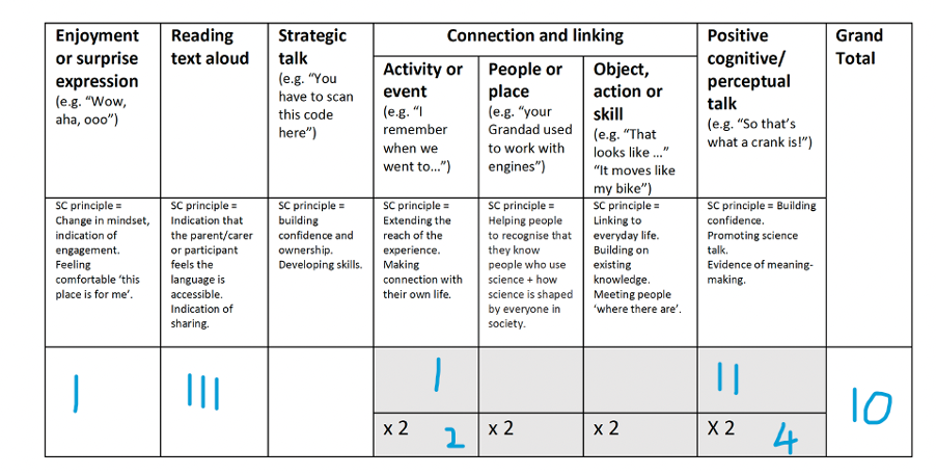
The categories of ‘Enjoyment or surprise’, ‘Reading text aloud’ and ‘Strategic talk’ were used in the coding scheme to identify whether the interpretation concept was holding visitors’ attention and provoking a reaction. However, these were considered less active modes of engagement. Visitor talk that revealed instances of ‘connection and linking’ (including the subcategories of ‘activity or event’, ‘people or place’ and ‘object action or skill’) such as “Can you remember that red spinning top you used to have?” or “We saw something like this at the mill we went too” had a weighted score of double points, as did talk that was viewed as cognitive or perceptual, such as “Look how the piston attaches to the crank.” This was because the author deemed these elements more significant in building science capital and providing more substantial evidence of meaning-making and active engagement. These high-scoring statements were also linked to key principles highlighted in the gallery interpretation plan.
Everyday Examples: ‘Recognising everyday examples enables me to make personal connections with the people, skills and STEM content in the Power Hall and feel that it is for me’ (Science Museum Group, 2020, p 7).
The ‘double scoring’ categories were judged to be evidence of richer engagement as they have the potential to be more reflective and transformative.
Tracking the visitor engagement experience in this way made it possible to quickly create an overall discourse analysis score for each sample. With this number, it was possible to compare the science capital discourse of one prototype to another, a process that would have been more complicated and time-consuming using a questionnaire or survey strategy.
Using the discourse analysis system described above, we ran three proto-scoping evaluation sessions for prototypes three and four (the interactive engine projection and the multimodal AR trail). These took place at the Museum with a total of 26 family dyads consisting of one parent/caregiver and one child (between the ages of four and eleven).
After reading a participant information sheet and agreeing to take part in the research, participant dyads were asked to use the two interpretation prototypes in turn, during which time the author recorded a tally of their science capital-themed utterances or dialogue and recorded the dwell time (the total time, in seconds, that the participants spent engaging with the prototype). The order in which the prototypes were presented to the participants was alternated to avoid bias due to participant fatigue.
At the end of the session, the participants were asked to give each prototype a score out of five. A visual representation helped children lead this aspect of the data collection, as seen in Figure 16.
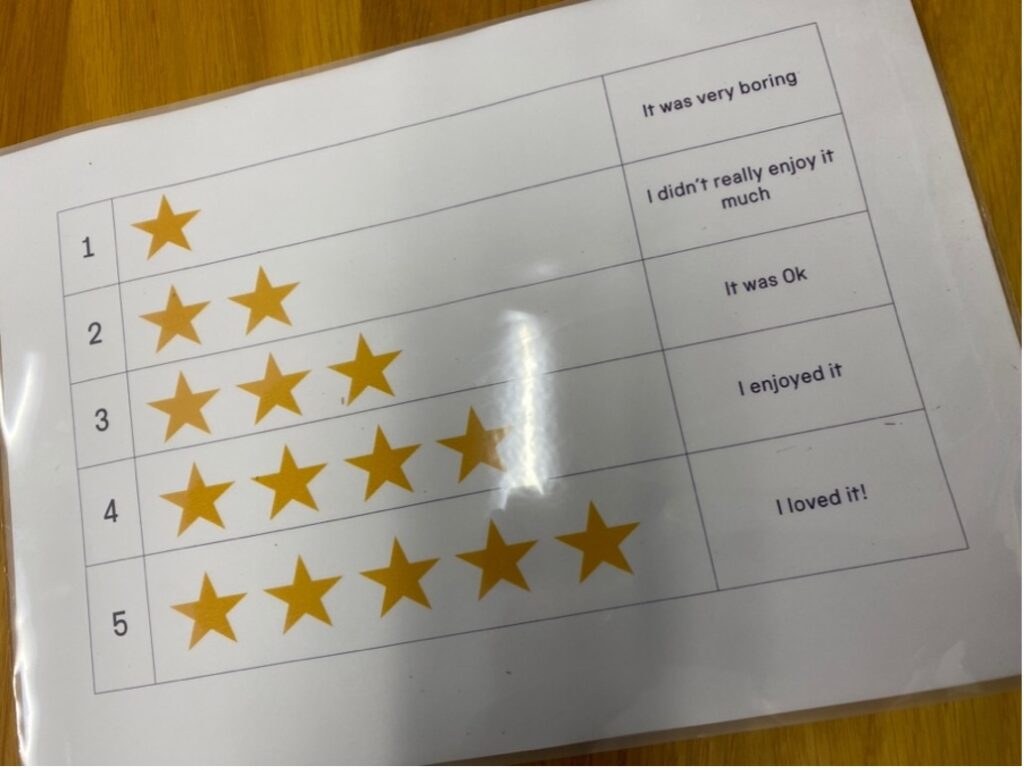
Results and discussion
The process resulted in 52 sets of data (26 for each prototype), and the information was used not only to identify which prototype appeared to generate the most science capital dialogue, but also which concept was working better to elicit specific types of science capital dialogue.
A summary of the compiled data can be seen Table 1 below, and a more exhaustive view of the data set appears in Appendix 1.
The interactive engine projection had a total discourse analysis score of 194 (average 7.5) compared to the multimodal trail which scored a total of 155 (average 6). This indicated that the interactive engine projection was the most successful interpretation concept for promoting social engagement and science capital coded intergenerational conversation.
As perhaps expected, the results of the discourse analysis aligned with the views of the participants’ experience scores; 21 out of 26 samples also showed a positive correlation between the discourse analysis score and the experience score. This can be seen by comparing the highest discourse analysis score against the highest experience score for each dyad. In other words, in 81 per cent of cases, the prototype that elicited more science capital-focused discourse was also rated to be the most enjoyable experience by the participants.
| Interactive projection panel | Multimodal AR trail | |
| Average discourse analysis score: | 7.5 | 6 |
| Average experience score out of five: | 4.5 | 4 |
| Average dwell time: | 113 | 132 |
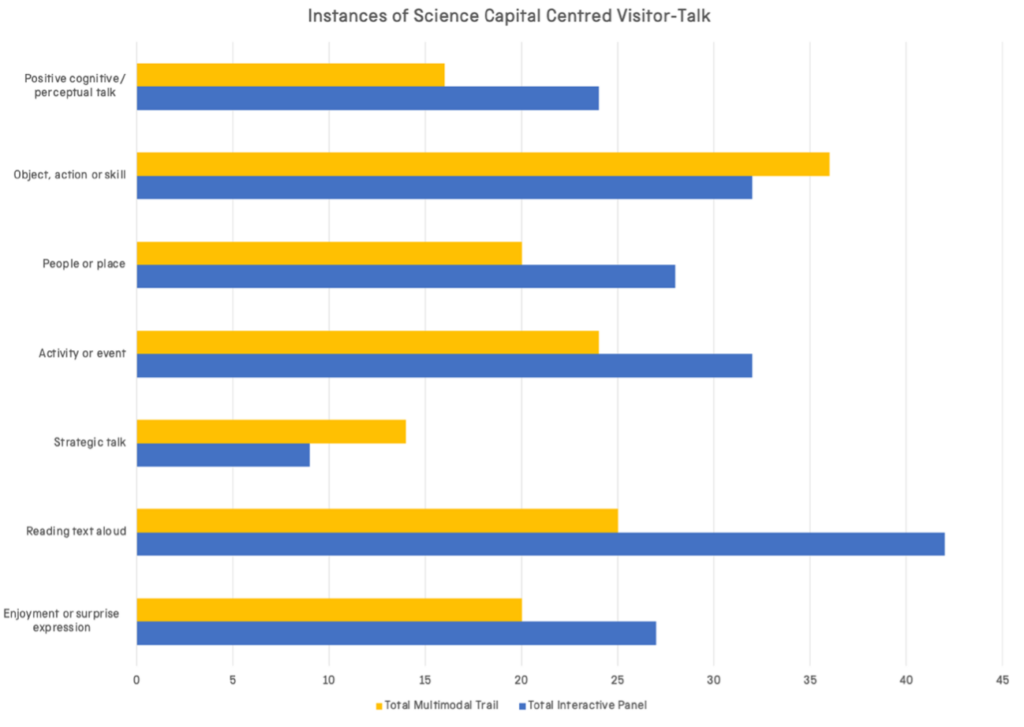
Using the collated data shown in Figure 17, the author was able to make further judgements about discourse themes. The interactive engine projection panel appeared to work well at eliciting talk where participants referred to an activity or event. For example, “I loved that day we went to the fairground with Uncle Ben,” or “The chain kept falling off my old bike, didn’t it, Dad?” This may suggest that this interpretation approach helped visitors to extend the reach of the experience by inspiring connections and links with the visitors’ lives. On the other hand, the multimodal AR trail appeared to encourage more strategic talk. This may suggest that the participant, when engaged with the multimodal AR trail, was taking control of the interpretation experience with a stronger sense of agency and independence. For example, “No, you have to spin a bit quicker, like this.”
While keeping a tally of the themed conversations and statements, we recognised that we could give value to the indirectly related statements that could be easily missed in other evaluation forms.
Finally, one of the most obvious results was that the interactive engine projection worked better at encouraging participants to read text information out loud. This is significant for shared attention opportunities and could suggest that the content is more consumable and fit for purpose in a family-friendly exhibition setting.
Limitations
It should be recognised that this was an early experiment used to trial the coding method and proto-scoping process. Further tests should be conducted to draw more concrete conclusions about using science capital-themed dialogue as a tool for measuring prototype interpretation success. Although the coding categories were led by categorisations used at SMG, additional studies are required to test the transferability of the evaluation process across multiple science museum themes and scenarios, and the coding system should also be trialled with other researchers to examine the dependability in relation to personal bias. The author recognises that, though the work was directed and informed by the Power Hall content team, the author took the position of designer and developer of the prototypes and the proto-scoping framework, and this could lead to a predisposition with regard to coding and analysis.
Furthermore, as seen in Table 1, the interpretation concept that recorded the lowest average discourse analysis score (the multimodal trail) saw the highest average visitor dwell time. This data may present a contrasting view of the common perception that dwell time indicates deeper visitor engagement (e.g. Jambor et al, 2020, p 6). However, it may also suggest the need for a further evaluation layer to understand and acknowledge other identifiers of engagement, such as physical actions (not just visitor verbalisations).
What has been made apparent is that prototyping a variety of different approaches to the same interpretation design challenge proved to be a fruitful and illuminating process and offered an exciting opportunity to explore a variety of technologies and techniques with real-life users before more formal briefs and commissions have been made. In turn, this strategy has the potential to lead to more audience-driven exhibition interpretation decisions and a more informed use of exhibition budgets.
One of the distinctive elements of this project was its interdisciplinary nature. It involved the close collaboration of skills from both museum and design professionals as well as the blended approach of physical and digital interpretation. Although the work was directed and informed by the Power Hall team, the author took the position of designer and developer of the prototypes as well as the proto-scoping framework. This provided a critical and holistic perspective to the study, enabling a close and comprehensive analysis of all stages of the design lifecycle. Despite this being a useful standpoint, the author acknowledged that there was an important need to be self-reflective and have an understanding of personal biases (Hoadley, 2004, p 204) to support generalisable and rigorous findings.
A key element to critique in the proto-scoping framework is the requirement to have multiple high-fidelity prototypes for the same interpretation design problem. This may be seen as a costly and time-consuming extravagance that could preclude its uptake in museums in the future. However, it is important to recognise that the comparative proto-scoping process has the potential to lead to more targeted and impactful exhibition budget spending, informed and driven by the museum visitor before expensive design and commissioning decisions are made. All of the prototypes demonstrated in this study were developed by the author. They were produced with a very limited budget and only fundamental technology skills; these were first steps in projection mapping and augmented reality for proto-scoping projection mapping and augmented reality productions. In terms of potential for future use, if done in-house, the museum employee(s) would require a rounded awareness of a range of digital skills and the time to explore them in detail. A more practical and less time-consuming solution could be to commission outside creative organisations to develop the prototypes in a paid bid to tender for the final production.
Conclusion
This article has addressed the need for a user-friendly and standardised method for exploring and comparing interactive science interpretation prototypes at the discovery phase of the project lifecycle before formal design decisions are made and developer briefs are written. With an overwhelming choice of opportunities and approaches for science exhibition teams to consider, this strategy helps to support audience-driven decision making with a family engagement focus. In the demonstrated proto-scoping strategy, the success of each interpretation concept was based on the prototype’s ability to prompt verbalised responses and connections to the science content. The work uniquely combines elements of SMG’s construct of a science capital approach with an easy-to-use discourse analysis system to facilitate the scoping of interactive interpretation ideas at an early opportunity.
Although the additional proto-scoping stage extends the duration of the interpretation design lifecycle, its merits lie in its ability to be disruptive and impactful. The process was designed to be efficient, illuminating and user-friendly without the need for time-consuming analysis, which may deter early audience consultation. During the testing of the prototypes with museum visitors, keeping a tally of real-time user dialogue coded via science capital-informed themes delivered some authentic and enlightening results from the perspective of social engagement, intergenerational conversation and science capital.
The discourse analysis method demonstrated in this study proved to be especially useful when dealing with child participants who were often found to become self-conscious, shy or less natural when data collection methods such as questionnaires or interviews were used. This perspective could suggest that proto-scoping has the potential to add a more equitable layer to exhibition interpretation design and development.
The results of this study provide further evidence of the importance of promoting intergenerational conversations in a museum environment. Analysis of family discourse has the potential to be a valid and usable method of comparatively evaluating the success of interactive interpretation concepts without the need for complex codification structures.
The work also acknowledges and underlines the societal value of science museum settings, emphasising that these rich spaces are a powerful asset for developing meaningful engagement opportunities. The practice research contributes to the field of interactive interpretation design in the context of a science museum setting, demonstrating a playful, participatory and comparative prototyping approach to explore design problems more widely and to encourage museum visitors to have a sense of agency and ownership in the design process.
Data
The data that supports the findings of this study is available from the author upon reasonable request.
Ethics
Prior to the study, formal ethical approval was sought from the University of Salford Research Ethics Committee (Approval AMR1920-007), and a risk assessment was undertaken before each data collection session.
Acknowledgments
This research has been made possible through the generous support and funding of the AHRC North West Consortium Doctoral Training Partnership and the guidance of the University of Salford supervisory team. The Science Museum Group and the Science and Industry Museum team members provided valued support and direction for this study. Sincere gratitude is given to industry supervisor and Interpretation Manager Kate Chatfield and Curator of Engineering Sarah Baines for their valuable input.



